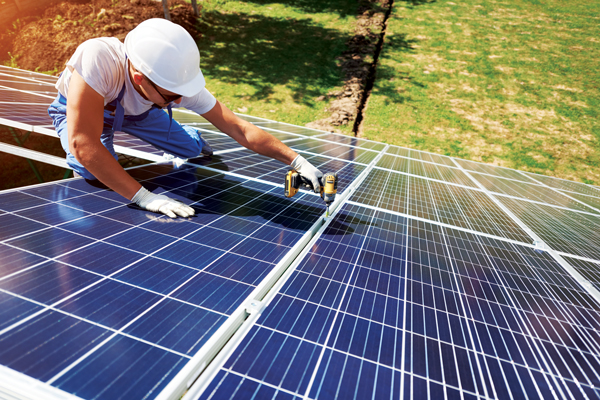Investors are seeking different ways to help the planet, and in that endeavor are starting to seek new ways to invest in the theme.
Solar panels remain a potent symbol and important investment in that cause. In the past, that’s meant investing in the stock of companies that sell the panels, but now there are increasingly new ways to invest in alternative energy—through bonds, and even through leases and loans to solar panel owners.
Asset-backed securities got a black eye during the financial crisis, but they remain a popular way to pool loans and leases for consumers, including those investing in residential solar energy rooftop systems.
A fully functioning solar asset-backed securities market “could truly be game-changing,” says Steve Liberatore, a managing director at Nuveen and manager of the $3.4 billion TIAA-CREF Social Choice Bond Fund.
An average solar panel system costs $12,000 after tax credits. The homeowners who are approved for loans for these installations generally have high FICO credit scores, and companies have started to pool this debt and sell it in the secondary market—anticipating cash flows from the loans and leases and hoping to let a broader range of homeowners finance their own solar energy in search of lower electric bills, Liberatore says.
The TIAA-CREF Social Choice Bond Fund holds asset-backed securities packaged and issued by solar energy development companies such as Sunrun; Solar Mosaic; Vivint Solar; and Tesla, which acquired SolarCity in 2016. Advisors can buy solar ABS the same way they would corporate, municipal or Treasury securities, says Liberatore. Otherwise, they can get exposure through mutual funds.
The advantage of investing in solar ABS instead of buying the public shares of the solar energy companies is that the underlying pool of borrowers have extremely high credit quality. With ABS, investors are much less exposed to the direct risk of investing in the solar energy companies themselves, since those stocks can be volatile, Liberatore notes.
Sunrun receives 20 years of predictable cash flows by selling homeowners power generated by the solar panel systems it leases to them. The EPA’s Greenhouse Gas Equivalencies Calculator anticipates that Sunrun’s first solar ABS portfolio will generate enough electricity for roughly 37,074 homes while annually displacing approximately 341,285 tons of CO2 equivalents, says Liberatore. That’s like taking 65,734 cars off the road.
Bonds offer another way to invest in the environment. Last October saw the launch of the world’s first sovereign “blue bond”—a vehicle designed to support sustainable ocean-related projects.
Three Ways To Go Greener With Fixed Income
June 3, 2019
« Previous Article
| Next Article »
Login in order to post a comment









